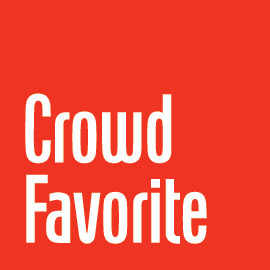*This article was originally published on Forty.co. Forty is now Crowd Favorite.
Every brand tribe has sacred things that help its members relate to the abstract concepts of the archetypes and the doctrine.
They can be symbolic representations, memory triggers, evocative themes, or components of the brand tribe’s mythology.
Icons
Icons are the symbolic visual representation of abstract concepts, usually related to the beliefs and values of the tribe. They can take the form of specific images (such as logos, graphics, photos, symbols, letters, or numbers) or more general visual elements (colors, typefaces, patterns, etc.)
People
The sacred people of a brand tribe can take a variety of forms:
- The Leader: Some brand tribes have a well-known, charismatic leader (e.g., Steve Jobs for Apple) who personify the brand.
- The Representative (or Role Model): Other tribes have a non-leader spokesperson – or symbolic spokesperson – who can be either real (e.g., Michael Jordan for Nike) or fictional (e.g., Coke’s “Max Headroom”).
- The Ensemble: Moving beyond individuals, some brand tribes can follow the ensemble model, emphasizing multiple brand-related characters rather than a particular individual (e.g., the players on a sports team.)
Animals
In tribal design, animals are often used to represent the tribe’s ideals or characteristics. Disney has Mickey Mouse, Budweiser its clydesdale horses, and Merrill Lynch has its bull. Animals create strong symbolic responses in consumers, which makes them an ideal vehicle for promoting the brand tribe’s beliefs and mythology. For some brands (usually more lighthearted ones), these animals can also serve as fictional representatives, such as the Geico gecko.
Words and phrases
With the power of language to conjure images, emotions, and memories, the exact words used in tribal design are vital to its overall success.
- Jargon: Every brand tribe has key words, sometimes unintelligible outside the tribe, that serve to unite the members and provide shortcuts for common concepts (e.g., Starbucks’ “venti”).
- Emotional triggers: Certain concepts can evoke an emotional reaction for members of the tribe, reminding them of their aspirations and motivations within the tribe (e.g., Nike’s “Just Do It”).
- Explanations: Over time, a tribe will often develop commonly-used explanations for concepts that might be difficult to explain to outsiders. As other members of the tribe hear those explanations, the best and most succinct explanations will tend to be repeated. One common example is how Apple users often explain their user experience to an outsider: “It just works.”
- Quotations: As members of the tribe discuss it, write about it, and share their thoughts with others, certain statements will stand out that embody the beliefs or ideals of the tribe particularly well, and these quotations will often be documented and repeated by other members.
Places
Places serve as geographical and contextual anchors for the brand tribe, giving members a way to physically live out certain aspects of the overall brand experience. Stores or offices often serve as sacred places for a brand tribe, but other locations (at a variety of geographic levels) can fulfill the role as well. Examples include Ben & Jerry’s Vermont and Elvis Presley’s Graceland.
Sounds
This may apply to some brands more than others, but in an effort to appeal to multiple senses you should try to engage tribe members’ hearing almost as much as you do their vision.
Music is the most common way to do this, as it can be used in retail environments, commercials, etc., but other sounds may include effects (Apple’s classic “bong” startup sound), equipment (coins falling in a slot machine), other consumers (roller coaster screams), or simply a side effect (the “snap, crackle, pop” of Rice Krispies).
These sounds may also include verbal conventions, such as tone of voice, the pronunciation of certain words, or a certain way of delivering a phrase (e.g., the way the receptionist greets clients as they enter).
The full experience
To create a rich tribal design experience, you should consider and develop as many of these “sacred objects” as possible. Getting deeply involved in a brand tribe requires that there be substance at each level, so even if many customers never know about these elements, it’s a delight for those Followers and Evangelists who get involved enough to discover them.
The same team and processes that made Forty synonymous with high-quality UX design and content strategy have been extended through integration with Crowd Favorite.
If you have a digital project in mind, now’s a great time to reach out!





